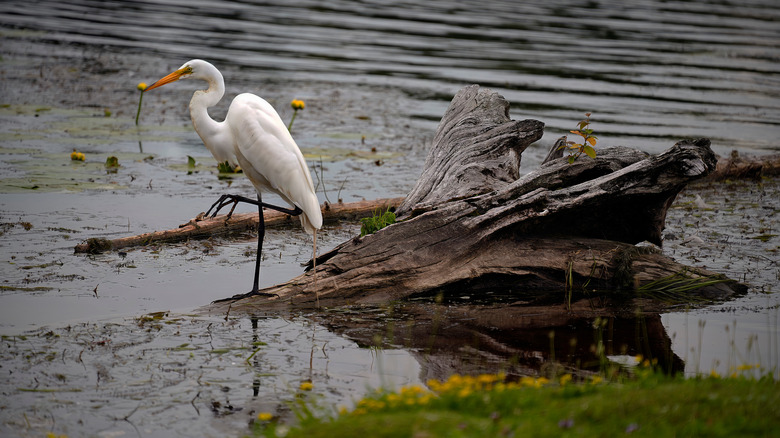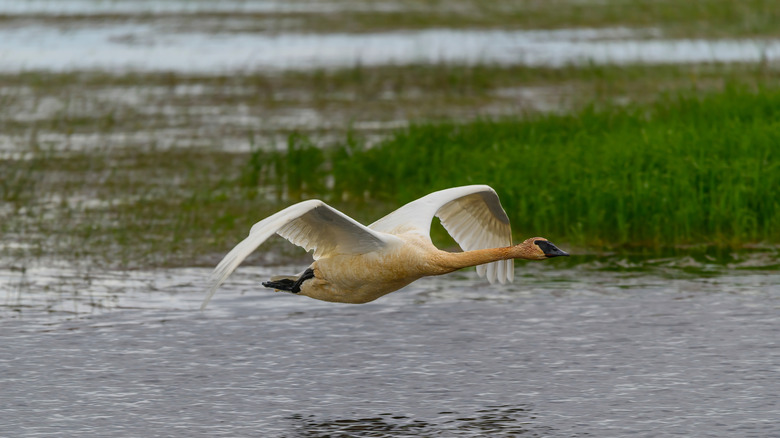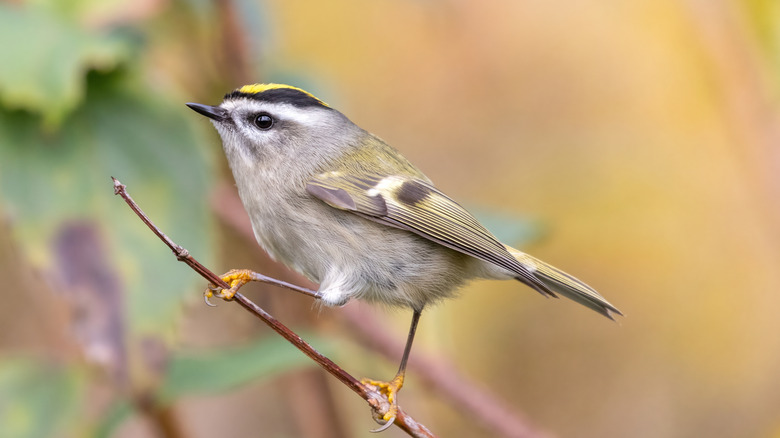
With the longest freshwater coastline in the United States (bordered by all but one of the Great Lakes), Michigan's wild landscapes are shaped by water. Between the ample lakeshore, nearby marshlands, and its position on the intersection of the Mississippi and Atlantic flyways — natural corridors for migratory species — the state is also a world-class birdwatching destination. Whether you visit during peak spring or fall migration seasons, the long days of summer, or in winter when northern birds
venture south from the Arctic, an ever-rotating lineup of avian species can be appreciated.
One of the best places in Michigan for birdwatching is the Sunrise Coast Birding Trail, which follows a large part of the Sunrise Coast Pure Michigan Byway along the western side of Lake Huron. Winding roughly 145 miles along the historic U.S. Route 23, this trail showcases vibrant freshwater coastal scenery between Mackinaw City in the north and Oscoda in the south.
Make a road trip of it, breaking the trek into a few days or even a week to delve deep into everything the eastern side of Michigan's Lower Peninsula has to offer. Travelers can fly through Detroit Metropolitan Wayne County Airport to arrive at Pellston Regional Airport, a closer regional airport that is a 20-minute drive from Mackinaw City. From there, they can rent a car to start exploring. In addition to diverse birdlife, driving along the Lake Huron coast allows for views of the expansive lake, sprawling forests, and other wildlife, including moose, beavers, deer, coyotes, and black bears.
Read more: The 5 Best Parks Where You Can See Bison Roam (Other Than Yellowstone), According To Visitors
What To See On The Sunrise Coast Birding Trail

From frequently sighted to rare or endangered species, the Sunrise Coast Birding Trail offers the chance to spot many different types of birds. Near Mackinaw City, along the northern end of the path, the Mackinac Straits Raptor Watch draws bird enthusiasts from March through early June and late August through mid-November. Observe migrating hawks (including red-tailed, broad-winged, and rough-legged varieties), falcons, eagles, ospreys, and even owls alongside professionals who are tracking and counting them as part of local conservation efforts. These birds, known for their grace as well as sheer power, may also stop over at Beaver Island, an isle west of the straits that is deemed one of the best islands in the Midwest.
Head south and stop to birdwatch at destinations like Cheboygan State Park, Sea Gull Point, New Presque Isle Lighthouse, Thunder Bay National Marine Sanctuary, Misery Bay Nature Preserve, Negwegon State Park, Sturgeon Point Lighthouse, and more. Regions like Presque Isle and Cheboygan counties also have dunes that are considered critical habitat for the endangered Great Lakes piping plover. Continue down to Oscoda to seek out the Kirtland's warbler, a species that was once endangered but has consistently improved its population. These elusive birds make their home in nearby Jack pine forests. Before you wrap up your road trip, treat yourself to a romantic lakeside getaway at the charming Huron House bed-and-breakfast and visit the underrated Tuttle Marsh Wildlife Area, both in Oscoda.
Other Bird Species You'll Encounter Along Michigan's Sunrise Coast

As one of more than 10 birdwatching trails in the state, there's no denying that you'll discover a vast array of wildlife as you travel the Sunrise Coast Birding Trail. But what exactly will you see beyond raptors, piping plovers, and Kirtland's warblers? The answer is quite a lot, considering that more than 400 species have been observed throughout Michigan.
In areas with hardwood trees and shrubs, travelers can spot thrushes, nuthatches, yellow warblers, and Northern cardinals, while the American redstart and red-headed woodpeckers are found in softer trees. Waterfowl abound near the lake, so visit waterways to see great blue herons, belted kingfishers, trumpeter and tundra swans, grebes, and various types of ducks, as well as Caspian terns and loons. Wetlands and marshes in the area — many with wooded trails — also offer an abundance of avian species, from marsh wrens and swamp sparrows to green herons, black-capped chickadees, Virginia rails, black terns, least bitterns, blue-gray gnatcatchers, blue jays, golden-crowned kinglets, and red-eyed or blue-headed vireos. In addition, local grasslands are home to grasshopper sparrows, Eastern meadowlarks, upland sandpipers, American kestrels, and more.
Visit Shoreline Park and the AuSable River in Oscoda or Historic Mill Creek in Mackinaw City for easy spotting, as these areas feature feeder stations. Those who are serious about tracking down many species should consider stopping by Wilderness State Park in the north or Tawas Point State Park in the south to rent "birding explorer packs" that offer binoculars, a compass, and bird identification brochures to get you started.
Ready to discover more hidden gems and expert travel tips? Subscribe to our free newsletter for access to the world's best-kept travel secrets.
Read the original article on Islands.











